The fragility of the objects and emotions that Ana Kun’s appropriately titled exhibition ← FRAGILE → is omnipresent throughout the artist’s works. The exhibition feels open, with a few highly concentrated areas. The artist sees it as a collection of isolations, connected to the pandemic, or to decisions that we need to live with, or to new experiences that leave their mark on us and leave us feeling alone. The Indecis space hosted guided tours led by Ana, in which she told us about the origins of each work and how the exhibition was conceived. At the entrance is a concertina pinned to the wall, which contains drawings from multiple stages of the pandemic, redrawn to fit the current theme. Nearby is an open book/folder conceived during a residency in Salzburg and an experiment of black-and-white drawings and stories in color. In the adjoining room is a drawing made in porcelain, produced in collaboration with Gruni, with a note added at the end of the exhibition. In the same room, starting from the ceiling, unfolds a map, as Ana calls it, begun in 2017, covering the entire room. Also here is a plant that the artist did not want to move because it fit the exhibition. Over a cup of tea, Ana was so kind as to tell me about each work and about how ← FRAGILE → came to be.
Many of the drawings on the concertina are pretty hard to read. Why did you display them like that and how did this help fit the work into the theme of isolation?
The work is based on drawings done at multiple points during the pandemic, for different online projects. Most are from Virus Diary, by Dan Perjovschi, Alina Andrei, George Roșu, and the guests from White Cuib, a few are from Norma, by Balamuc (my group together with Livia Coloji and Răzvan Cornici), and a few from my channel. Many of the exhibition’s visitors already knew most of them. While I was redrawing them, I felt the need to add a series of notes/observations around the change of context, because the pandemic as we understand it now is different from how it seemed in the beginning. The work can only be read from up close, leafing through its rice paper folds, deciphering details, not allowing for an overview of the theme of the pandemic. During the exhibition, it was, naturally, a suspended work, both metaphorically and literally. I am still adding to and commenting on it.
In the exhibition I noticed a series of experiments you produced in time, but also recently. What is the working process behind them?
During the lockdown, I both had and didn’t have time, so I often preferred quick, black-and-white notations. Every now and then I would remember that I had brought the watercolors home and that I am fascinated by drawings in color. It takes some time to clean your brushes, prepare your paint, etc., thanks to which my watercolor notations turn out more poetic. I hadn’t tried making notes in watercolor before. I was glad I tried. Then I also tried taking my time with my black-and-white drawings. That is what I did, and the three drawings that end the exhibition tour, a combination of quick notations and paragraphed text, are my most essay-like.
Another experiment is Metrage, the drawing in the second room. I started it in 2017, also on thin rice paper, 1×10 meters. I felt it did not have a finite format, because I kept rolling and unrolling the scroll, without knowing where I was and how much more I had to draw and write. I pursued and developed multiple ideas, sometimes suddenly abandoning or returning to a subject some meters farther: reproductive rights, death, the male gaze, the female gaze, information oversaturation, etc. It is a combination of drawing, poetry, and essay-writing. I tried not to censor myself or to make sketches, which is why you can sometimes see how I came to different ideas. I see this work as a map: you can start anywhere and follow the path of an idea, engaging in a bit of gymnastics to actually be able to follow it. As it was exhibited at Indecis (thank you), it seemed like the husk of the room, strong and fragile at the same time. It was the first time that I had seen the whole thing unraveled.
One of the works that surprised me in this exhibition is the porcelain drawing. Given your practice, how did you come to work in porcelain and what is the story of the drawing you later made on the wall?
Coat Hanger. That is my most recent work. I sculpted it at Gruni (thank you), and, while working, I was talking with my colleague Livia about abortion, not only the situation in Poland, but also that in Romania, where getting an abortion has become increasingly difficult, especially during the pandemic. I initially wanted to finish the drawing with a comment scratched into the wall, because I wanted it to be a strictly volumetric work. In the end, I drew the hand holding the coat hanger in a colored pencil, because the scratching was illegible. The roughest part of the work is also the most delicate. It does not contain text, because we know all too well what one side and the other have to say about abortion, but I did depict the characters with their mouths open to convey the idea of speech. Everybody is speaking and making more or less empathetic choices…
I redrew the hand holding the coat hanger on the postcard attached to the first copies of the publication accompanying the exhibition. Each time I drew it (in one continuous line, like the technique used in the porcelain drawing), I would feel a bit dizzy. Because the work was finished in the middle of the exhibition, it was seen differently at the beginning. I never told people clearly what it would be about, just that I would add to it and share it online. The initial discussions around it were connected to the fragility and beauty of porcelain, to how it contrasted to the work Metrage, next to which it was placed. A fragment of the work was also on the exhibition’s poster, but I postponed telling people what it was about as far as I could.
Your residency period in Salzburg was marked by loneliness, and the book showcased in the exhibition is a mix of personal experiences spanning less than a month. Can you tell me about how this book came to be?
Things are not black x white like in school. I decided to make two artists’ books, one a copy of the other, and to leave one in the residency archive at the end. They are made up of drawings and notations answering to my experiences in Salzburg. I got ads for food and couches in the mail, from which I created a collage about a certain oneiric consumerism, in which all objects have basically the same size and induce a constant state of contentment, bliss. I missed my studio colleagues at Balamuc, and, from the pictures of models in catalogues, I made a portrait of us as a new, beautiful, fictional, Austrian collective. Then I made two copies of the collage and added them to the books.
In this same book I added a frieze-style drawing, a response to a drawing I had seen at the local history museum, showing a procession marking 1000 years of Christianity, where the classes of the time celebrated their relationship to God. My translation presents a procession of artists-in-residence celebrating their relation to Art.
Plus many other drawings and notations. About the homeless Romanian migrants working on developing the city’s housing who I met one night at a shelter. About the concentration camp for Roma and Sinti people during the Second World War. About the 100 years that Austrian women have been allowed to vote, about precarity, insecurity, and the exhibitions I visited. It was a very intense period in which I tried to capture and translate every experience onto paper.
Ana Kun’s solo show, ← FRAGILE →, took place at Indecis Artist Run Space in Timisoara, during 15.11 – 15.12.2020.
Translated by Rareș Grozea
POSTED BY
Georgia Țidorescu
Georgia Țidorescu is studying for a MA degree in Contemporary Curatorial Practices at the University of Art and Design Cluj-Napoca where she also got a BA in art history. Since 2018 she worked as an ...
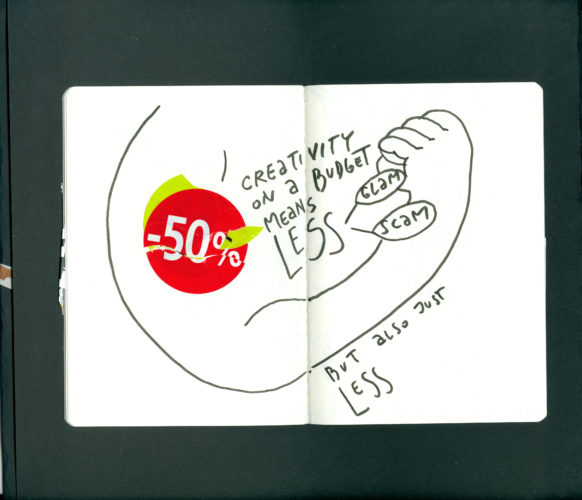
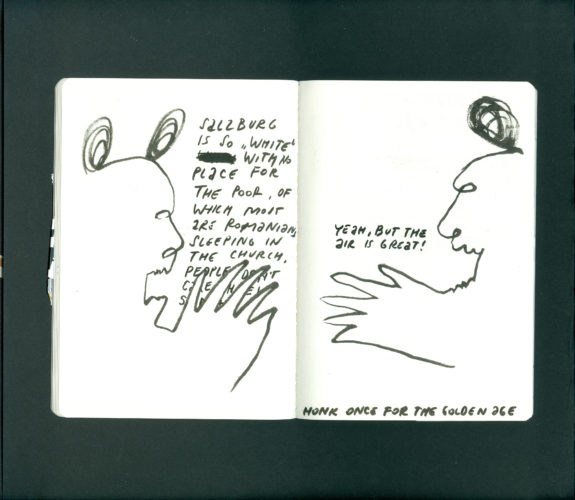

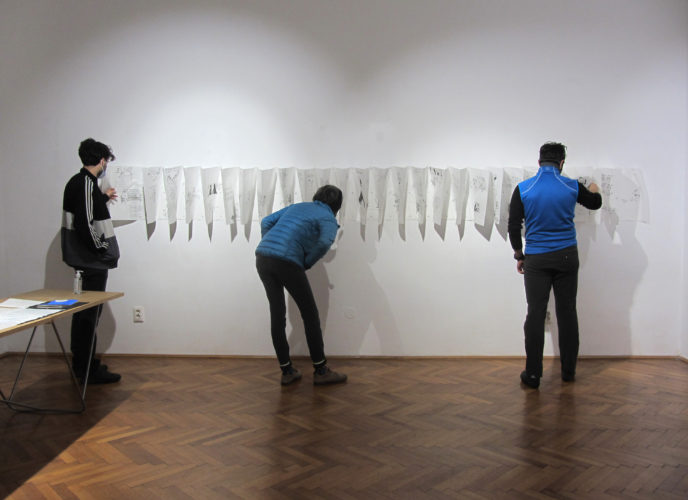
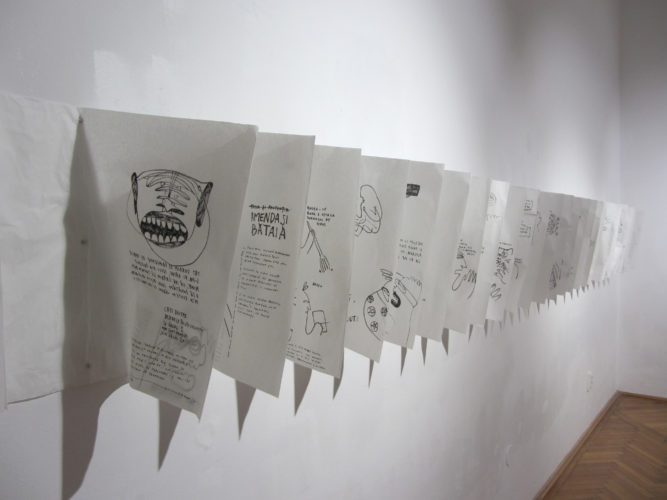

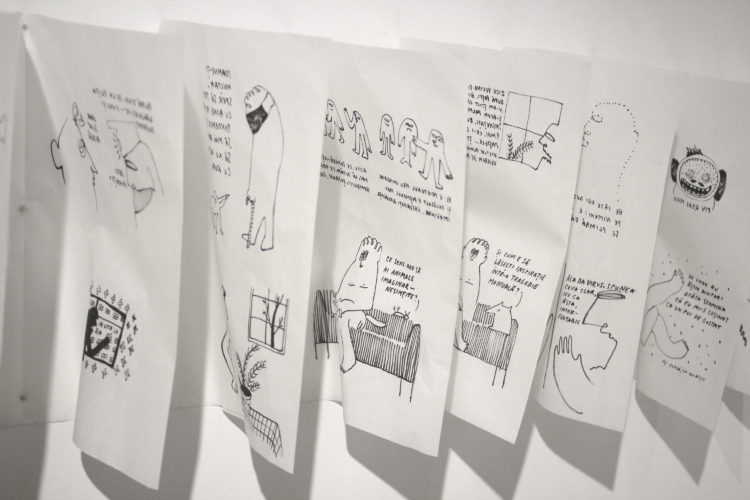
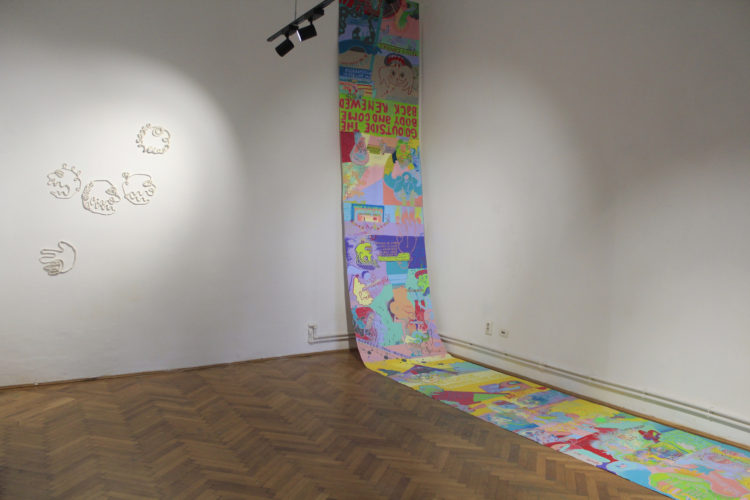
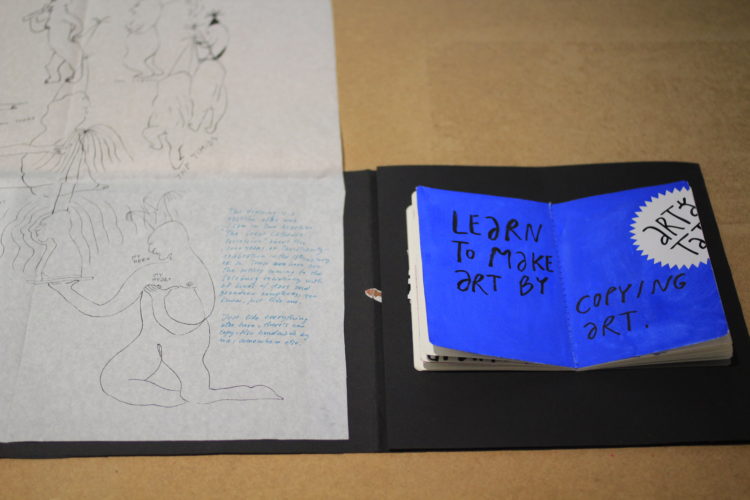
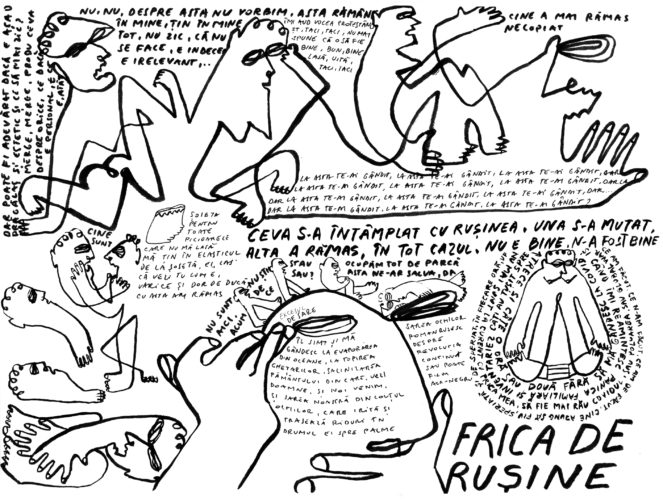
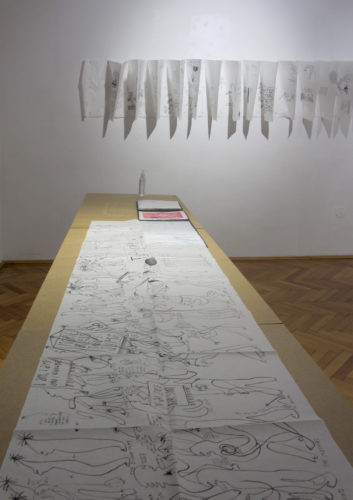
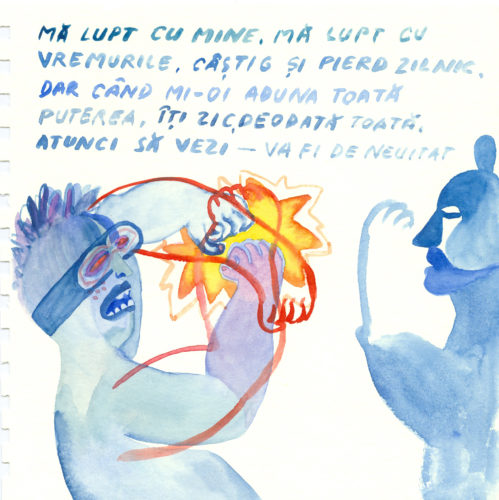
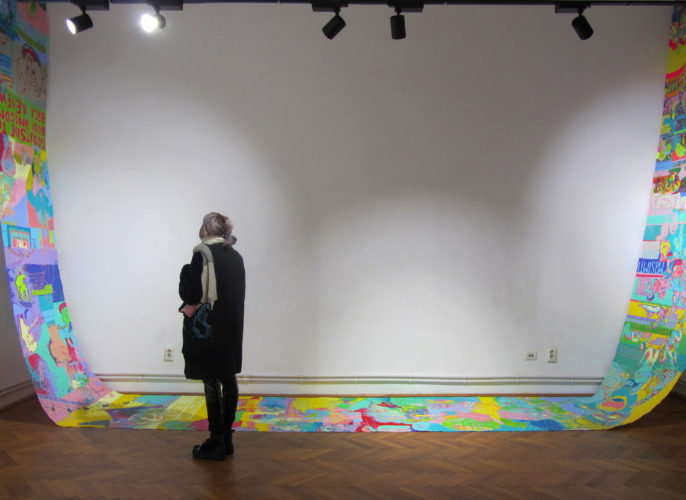
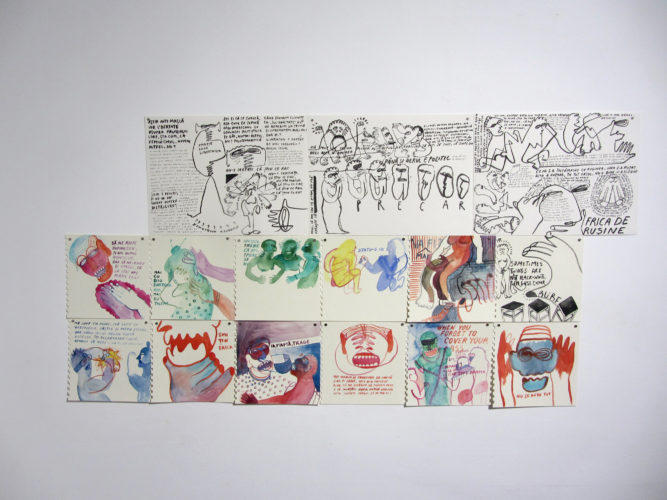
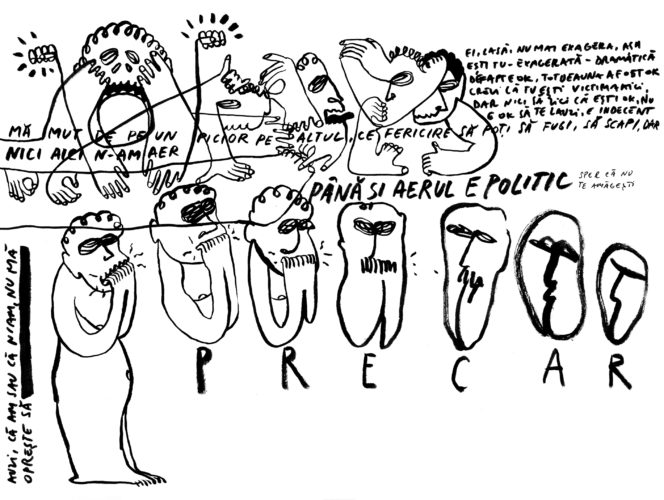
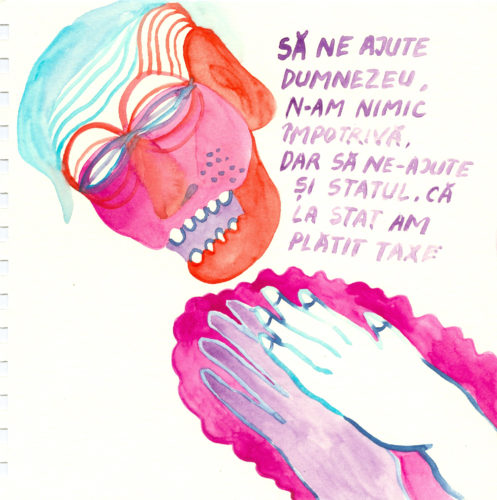
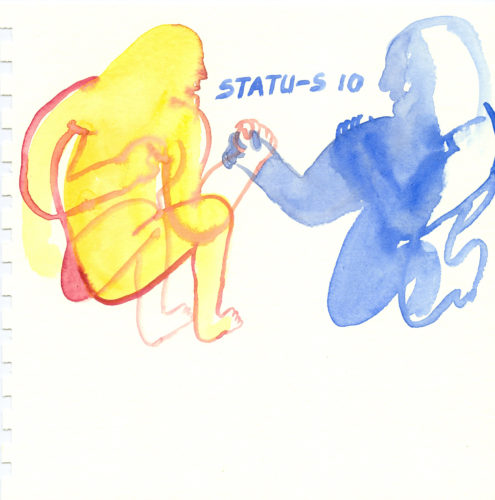

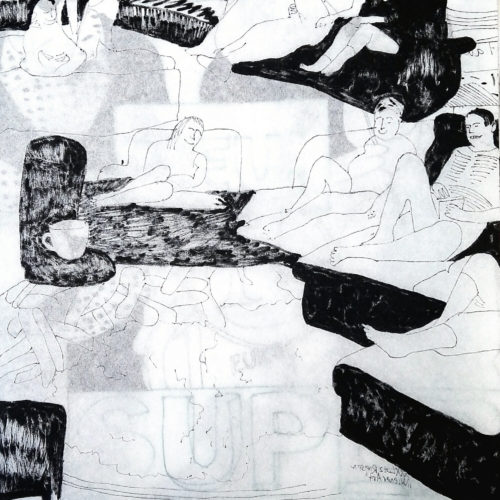
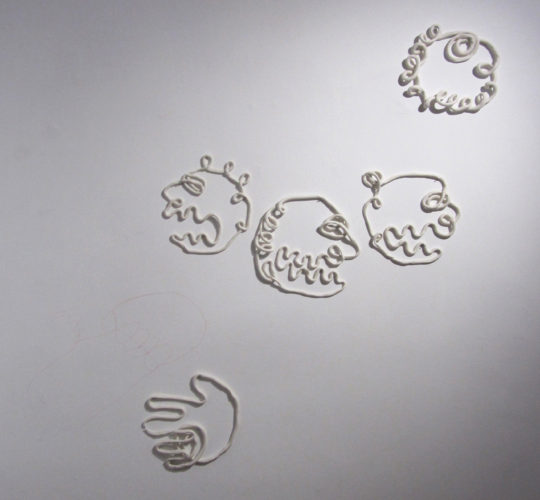
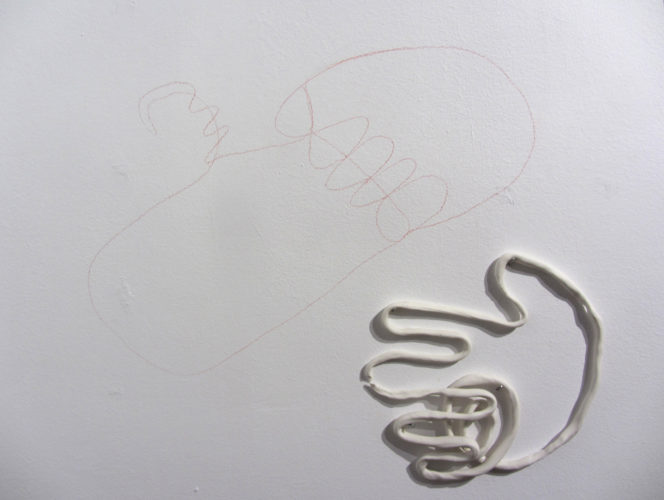
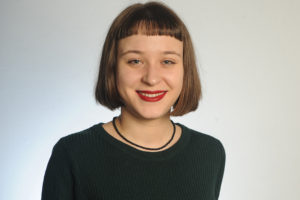
Comments are closed here.